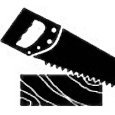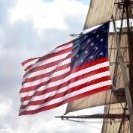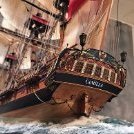DONATION DRIVE - SUPPORT MSW - DO YOUR PART TO KEEP THIS GREAT FORUM GOING!
×
-
Posts
1,878 -
Joined
-
Last visited
Reputation Activity
-
 Chuck Seiler got a reaction from Ryland Craze in Modelers Sawmill Permanent Closure
Chuck Seiler got a reaction from Ryland Craze in Modelers Sawmill Permanent Closure
I just saw this (no pun intended). I echo others here by saying this is sad news and you will be greatly missed. I pray whatever physical issues that caused this are not too debilitating. Stay well.
-
 Chuck Seiler reacted to Joe V in Modelers Sawmill Permanent Closure
Chuck Seiler reacted to Joe V in Modelers Sawmill Permanent Closure
Thank you everyone for the kind words.
-
 Chuck Seiler got a reaction from Joe V in Modelers Sawmill Permanent Closure
Chuck Seiler got a reaction from Joe V in Modelers Sawmill Permanent Closure
I just saw this (no pun intended). I echo others here by saying this is sad news and you will be greatly missed. I pray whatever physical issues that caused this are not too debilitating. Stay well.
-
 Chuck Seiler reacted to Joe V in Modelers Sawmill Permanent Closure
Chuck Seiler reacted to Joe V in Modelers Sawmill Permanent Closure
Hello guys & gals,
I just want to let everyone know that I had to shut down the shop due to ongoing physical issues. I just want to thanks all the wonderful people I met and everyone who made a purchase and supported Modelers Sawmill. I'm leaving my email up until I have the last few orders out for delivery then I will shut down that as well.
Thanks again,
Joe Volpe
-
 Chuck Seiler reacted to Danny_CZ in 2023 Donations drive
Chuck Seiler reacted to Danny_CZ in 2023 Donations drive
Donated, Merry Christmas NRG and MSW! After I am gonna have more than 100GBP on my spending account, count me in on more regular donations!
For now all the best to 2026 and thank you all for great experience so far!
Danny
-
 Chuck Seiler got a reaction from GrandpaPhil in Prince de Neufchatel by Coyote_6 – Constructo – 1/58 scale - American privateer
Chuck Seiler got a reaction from GrandpaPhil in Prince de Neufchatel by Coyote_6 – Constructo – 1/58 scale - American privateer
Steve,
You may have to name your endeavors "Steve's Spit and Polish Restorations".
I am a little late to the discussion and was going to mention Rob Napier's thoughts on the use of saliva, but Keith beat me. Rob is a well known/well respected restorer who has written about it. Don Dressel can probably tell you more about him, if you have an hour or 3. Have you spoken to Jon Sanford about model cleaning?
-
 Chuck Seiler got a reaction from vvvjames in Prince de Neufchatel by Coyote_6 – Constructo – 1/58 scale - American privateer
Chuck Seiler got a reaction from vvvjames in Prince de Neufchatel by Coyote_6 – Constructo – 1/58 scale - American privateer
Steve,
You may have to name your endeavors "Steve's Spit and Polish Restorations".
I am a little late to the discussion and was going to mention Rob Napier's thoughts on the use of saliva, but Keith beat me. Rob is a well known/well respected restorer who has written about it. Don Dressel can probably tell you more about him, if you have an hour or 3. Have you spoken to Jon Sanford about model cleaning?
-
 Chuck Seiler got a reaction from Coyote_6 in Prince de Neufchatel by Coyote_6 – Constructo – 1/58 scale - American privateer
Chuck Seiler got a reaction from Coyote_6 in Prince de Neufchatel by Coyote_6 – Constructo – 1/58 scale - American privateer
Steve,
You may have to name your endeavors "Steve's Spit and Polish Restorations".
I am a little late to the discussion and was going to mention Rob Napier's thoughts on the use of saliva, but Keith beat me. Rob is a well known/well respected restorer who has written about it. Don Dressel can probably tell you more about him, if you have an hour or 3. Have you spoken to Jon Sanford about model cleaning?
-
 Chuck Seiler got a reaction from Keith Black in Prince de Neufchatel by Coyote_6 – Constructo – 1/58 scale - American privateer
Chuck Seiler got a reaction from Keith Black in Prince de Neufchatel by Coyote_6 – Constructo – 1/58 scale - American privateer
Steve,
You may have to name your endeavors "Steve's Spit and Polish Restorations".
I am a little late to the discussion and was going to mention Rob Napier's thoughts on the use of saliva, but Keith beat me. Rob is a well known/well respected restorer who has written about it. Don Dressel can probably tell you more about him, if you have an hour or 3. Have you spoken to Jon Sanford about model cleaning?
-
 Chuck Seiler reacted to Keith Black in Prince de Neufchatel by Coyote_6 – Constructo – 1/58 scale - American privateer
Chuck Seiler reacted to Keith Black in Prince de Neufchatel by Coyote_6 – Constructo – 1/58 scale - American privateer
One should never use tap water, Steve. Lightly moisten the Q-Tip in your mouth and then gently swab. Ole fashioned spit is the best cleaner but it's slow going. One can only work up so much spit in a sitting.
-
 Chuck Seiler reacted to Coyote_6 in Prince de Neufchatel by Coyote_6 – Constructo – 1/58 scale - American privateer
Chuck Seiler reacted to Coyote_6 in Prince de Neufchatel by Coyote_6 – Constructo – 1/58 scale - American privateer
Mainmast tackle are done.
Tackle (runner) pendents...
Tackles rigged...
And now the mainmast is pretty well in line. I can fine tune with the shrouds...
Thanks for looking!
-
 Chuck Seiler got a reaction from Taken Aback in Chris Watton and Vanguard Models news and updates Volume 2
Chuck Seiler got a reaction from Taken Aback in Chris Watton and Vanguard Models news and updates Volume 2
When I first seriously got into wooden ship modeling about 30 years ago, our club was mostly 60, 70 and 80 year olds. They were lamenting that there were very few young people in the hobby and it was dying out. Now, at 71, I sit back and smile. The young folks who were NOT into the hobby back then are the old folks that ARE in the hobby now. In addition, our club has several 20/30-somethings, many 40-somethings and a few pre-teens.
The hobby is thriving and with the plethora of resources/kit makers we will be around for a long time. ...Well, at least the hobby.
-
 Chuck Seiler reacted to Kenchington in Chris Watton and Vanguard Models news and updates Volume 2
Chuck Seiler reacted to Kenchington in Chris Watton and Vanguard Models news and updates Volume 2
I do. Every time.
Sailing warships carried such large and prominent flags that they form a key aspect of the overall appearance. So getting the vexillology wrong is a quick way to ruin an otherwise-excellent model.
Trevor
-
 Chuck Seiler reacted to brunnels in Chris Watton and Vanguard Models news and updates Volume 2
Chuck Seiler reacted to brunnels in Chris Watton and Vanguard Models news and updates Volume 2
I'm in my 30's with my first child born this year, so I'm probably the outlier in both groups. I occasionally visit reddit's ship modeling sub forum, and there are plenty of younger people into ship models. Remember though that even a cheap $100- $200 kit can be a large investment for young people in an ever increasingly expensive world, then you have to account that the factors of space and time to build the model are also things that most younger people don't have until they get a little older. Plastic scale modeling is bigger than ever, so don't think that younger people aren't into scale modelling anymore, wooden ship modelling just requires a lot more resources that younger people don't have yet.
-
 Chuck Seiler got a reaction from Canute in Chris Watton and Vanguard Models news and updates Volume 2
Chuck Seiler got a reaction from Canute in Chris Watton and Vanguard Models news and updates Volume 2
When I first seriously got into wooden ship modeling about 30 years ago, our club was mostly 60, 70 and 80 year olds. They were lamenting that there were very few young people in the hobby and it was dying out. Now, at 71, I sit back and smile. The young folks who were NOT into the hobby back then are the old folks that ARE in the hobby now. In addition, our club has several 20/30-somethings, many 40-somethings and a few pre-teens.
The hobby is thriving and with the plethora of resources/kit makers we will be around for a long time. ...Well, at least the hobby.
-
 Chuck Seiler got a reaction from hollowneck in Chris Watton and Vanguard Models news and updates Volume 2
Chuck Seiler got a reaction from hollowneck in Chris Watton and Vanguard Models news and updates Volume 2
When I first seriously got into wooden ship modeling about 30 years ago, our club was mostly 60, 70 and 80 year olds. They were lamenting that there were very few young people in the hobby and it was dying out. Now, at 71, I sit back and smile. The young folks who were NOT into the hobby back then are the old folks that ARE in the hobby now. In addition, our club has several 20/30-somethings, many 40-somethings and a few pre-teens.
The hobby is thriving and with the plethora of resources/kit makers we will be around for a long time. ...Well, at least the hobby.
-
 Chuck Seiler got a reaction from Clark in Chris Watton and Vanguard Models news and updates Volume 2
Chuck Seiler got a reaction from Clark in Chris Watton and Vanguard Models news and updates Volume 2
When I first seriously got into wooden ship modeling about 30 years ago, our club was mostly 60, 70 and 80 year olds. They were lamenting that there were very few young people in the hobby and it was dying out. Now, at 71, I sit back and smile. The young folks who were NOT into the hobby back then are the old folks that ARE in the hobby now. In addition, our club has several 20/30-somethings, many 40-somethings and a few pre-teens.
The hobby is thriving and with the plethora of resources/kit makers we will be around for a long time. ...Well, at least the hobby.
-
 Chuck Seiler got a reaction from thibaultron in Chris Watton and Vanguard Models news and updates Volume 2
Chuck Seiler got a reaction from thibaultron in Chris Watton and Vanguard Models news and updates Volume 2
When I first seriously got into wooden ship modeling about 30 years ago, our club was mostly 60, 70 and 80 year olds. They were lamenting that there were very few young people in the hobby and it was dying out. Now, at 71, I sit back and smile. The young folks who were NOT into the hobby back then are the old folks that ARE in the hobby now. In addition, our club has several 20/30-somethings, many 40-somethings and a few pre-teens.
The hobby is thriving and with the plethora of resources/kit makers we will be around for a long time. ...Well, at least the hobby.
-
 Chuck Seiler got a reaction from Cathead in Chris Watton and Vanguard Models news and updates Volume 2
Chuck Seiler got a reaction from Cathead in Chris Watton and Vanguard Models news and updates Volume 2
When I first seriously got into wooden ship modeling about 30 years ago, our club was mostly 60, 70 and 80 year olds. They were lamenting that there were very few young people in the hobby and it was dying out. Now, at 71, I sit back and smile. The young folks who were NOT into the hobby back then are the old folks that ARE in the hobby now. In addition, our club has several 20/30-somethings, many 40-somethings and a few pre-teens.
The hobby is thriving and with the plethora of resources/kit makers we will be around for a long time. ...Well, at least the hobby.
-
 Chuck Seiler got a reaction from palmerit in Chris Watton and Vanguard Models news and updates Volume 2
Chuck Seiler got a reaction from palmerit in Chris Watton and Vanguard Models news and updates Volume 2
When I first seriously got into wooden ship modeling about 30 years ago, our club was mostly 60, 70 and 80 year olds. They were lamenting that there were very few young people in the hobby and it was dying out. Now, at 71, I sit back and smile. The young folks who were NOT into the hobby back then are the old folks that ARE in the hobby now. In addition, our club has several 20/30-somethings, many 40-somethings and a few pre-teens.
The hobby is thriving and with the plethora of resources/kit makers we will be around for a long time. ...Well, at least the hobby.
-
 Chuck Seiler got a reaction from rcweir in Chris Watton and Vanguard Models news and updates Volume 2
Chuck Seiler got a reaction from rcweir in Chris Watton and Vanguard Models news and updates Volume 2
When I first seriously got into wooden ship modeling about 30 years ago, our club was mostly 60, 70 and 80 year olds. They were lamenting that there were very few young people in the hobby and it was dying out. Now, at 71, I sit back and smile. The young folks who were NOT into the hobby back then are the old folks that ARE in the hobby now. In addition, our club has several 20/30-somethings, many 40-somethings and a few pre-teens.
The hobby is thriving and with the plethora of resources/kit makers we will be around for a long time. ...Well, at least the hobby.
-
 Chuck Seiler got a reaction from Rik Thistle in Chris Watton and Vanguard Models news and updates Volume 2
Chuck Seiler got a reaction from Rik Thistle in Chris Watton and Vanguard Models news and updates Volume 2
When I first seriously got into wooden ship modeling about 30 years ago, our club was mostly 60, 70 and 80 year olds. They were lamenting that there were very few young people in the hobby and it was dying out. Now, at 71, I sit back and smile. The young folks who were NOT into the hobby back then are the old folks that ARE in the hobby now. In addition, our club has several 20/30-somethings, many 40-somethings and a few pre-teens.
The hobby is thriving and with the plethora of resources/kit makers we will be around for a long time. ...Well, at least the hobby.
-
 Chuck Seiler got a reaction from chris watton in Chris Watton and Vanguard Models news and updates Volume 2
Chuck Seiler got a reaction from chris watton in Chris Watton and Vanguard Models news and updates Volume 2
When I first seriously got into wooden ship modeling about 30 years ago, our club was mostly 60, 70 and 80 year olds. They were lamenting that there were very few young people in the hobby and it was dying out. Now, at 71, I sit back and smile. The young folks who were NOT into the hobby back then are the old folks that ARE in the hobby now. In addition, our club has several 20/30-somethings, many 40-somethings and a few pre-teens.
The hobby is thriving and with the plethora of resources/kit makers we will be around for a long time. ...Well, at least the hobby.
-
 Chuck Seiler got a reaction from Ryland Craze in Chris Watton and Vanguard Models news and updates Volume 2
Chuck Seiler got a reaction from Ryland Craze in Chris Watton and Vanguard Models news and updates Volume 2
When I first seriously got into wooden ship modeling about 30 years ago, our club was mostly 60, 70 and 80 year olds. They were lamenting that there were very few young people in the hobby and it was dying out. Now, at 71, I sit back and smile. The young folks who were NOT into the hobby back then are the old folks that ARE in the hobby now. In addition, our club has several 20/30-somethings, many 40-somethings and a few pre-teens.
The hobby is thriving and with the plethora of resources/kit makers we will be around for a long time. ...Well, at least the hobby.
-
 Chuck Seiler got a reaction from Nirvana in Chris Watton and Vanguard Models news and updates Volume 2
Chuck Seiler got a reaction from Nirvana in Chris Watton and Vanguard Models news and updates Volume 2
When I first seriously got into wooden ship modeling about 30 years ago, our club was mostly 60, 70 and 80 year olds. They were lamenting that there were very few young people in the hobby and it was dying out. Now, at 71, I sit back and smile. The young folks who were NOT into the hobby back then are the old folks that ARE in the hobby now. In addition, our club has several 20/30-somethings, many 40-somethings and a few pre-teens.
The hobby is thriving and with the plethora of resources/kit makers we will be around for a long time. ...Well, at least the hobby.













